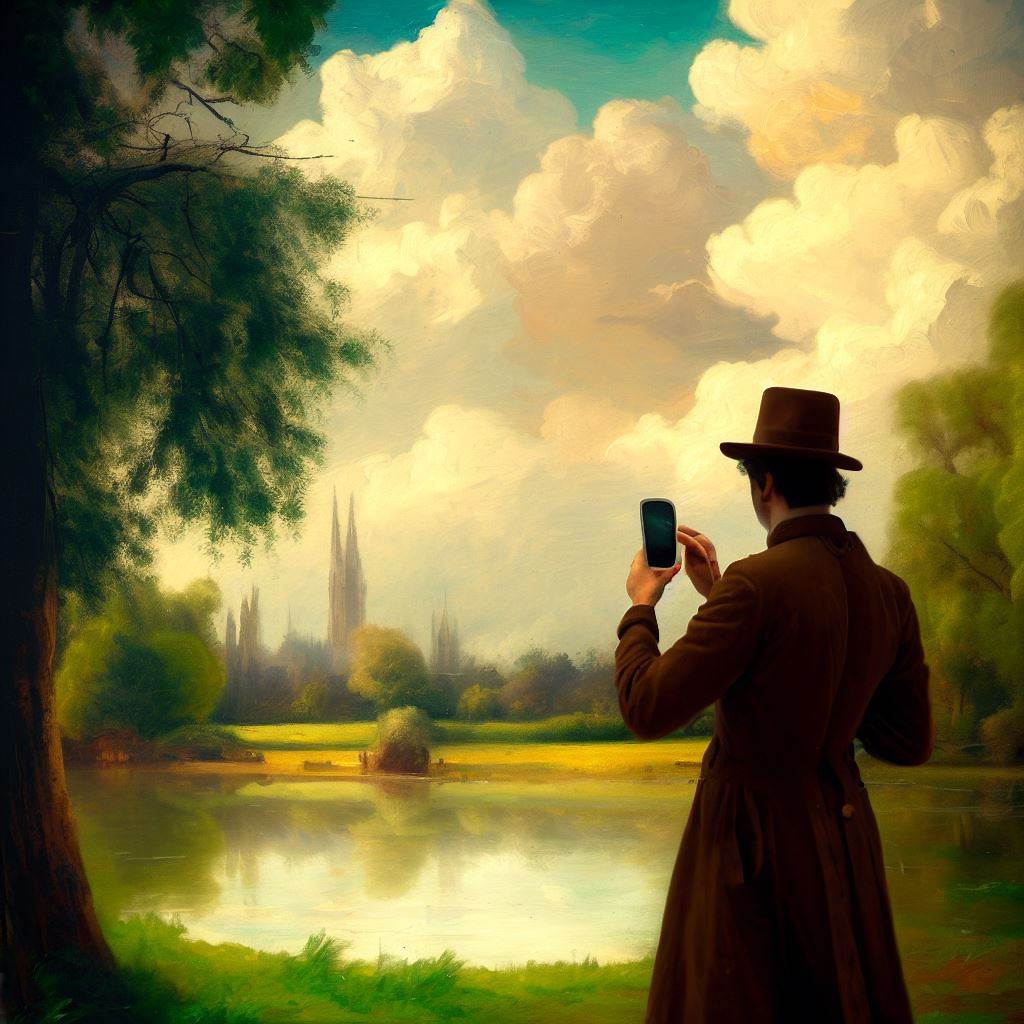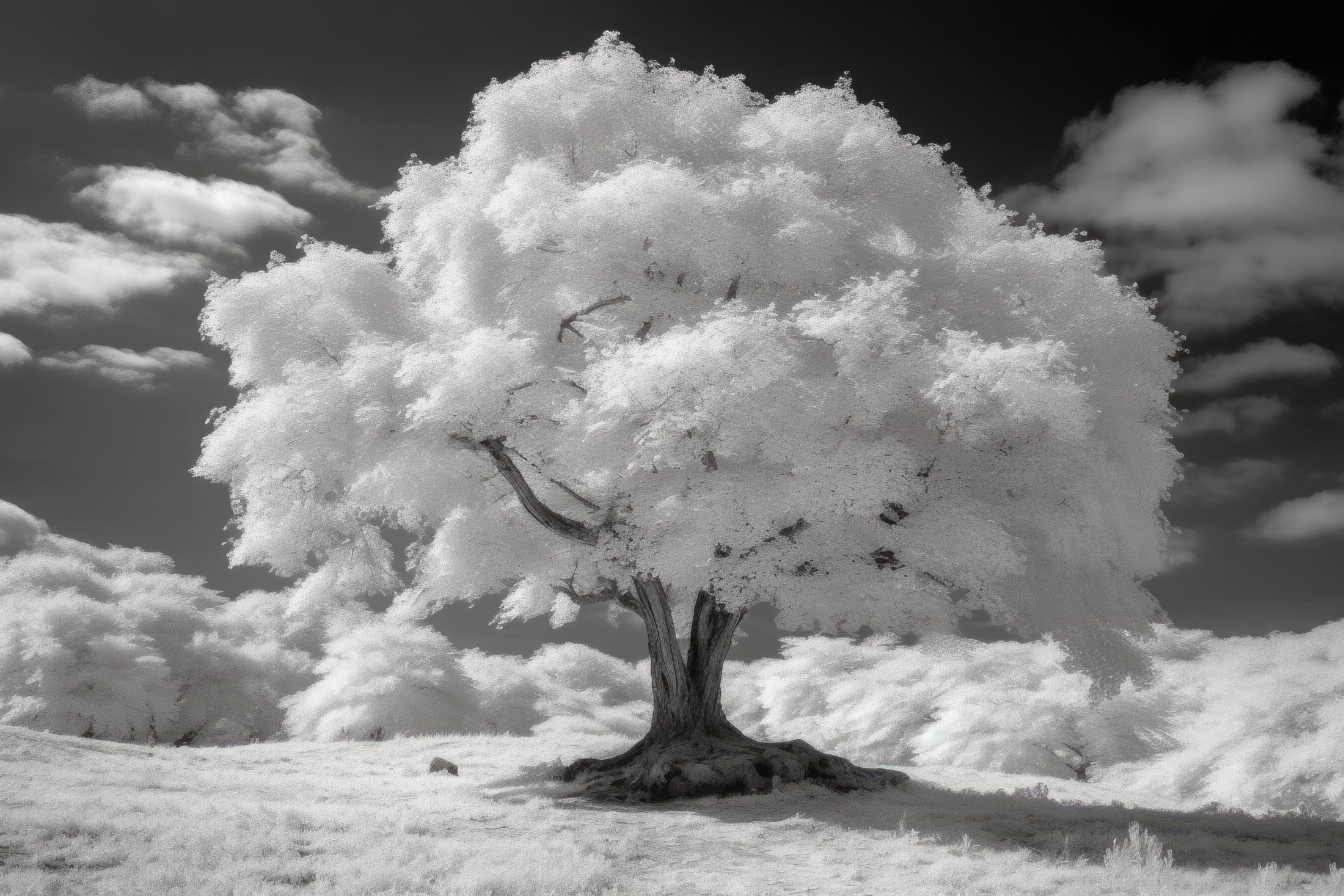For examples of AI images, click or tap on the links below (significant MB downloads):
- The Impact of Documentary Photography (Created entirely by AI)
- AI Art Project: In a Field of Wheat
- Trees
- Mona Lisa
- Inspirational AI
See also:
Using Microsoft’s Bing “AI” Image Creator and now Midjourney, I entered many strings of text and let the software create original images based on the specific descriptions I’d chosen. Many of the results were intriguing, even impressive.
Faces that appear in the mid-distance, and hands in particular, are too often rendered improperly, which is a major disappointment, but I’m guessing that as the software evolves the images will become more and more accurate.
Horses with 5 legs, an occasional dog with no head but 2 tails, one at either end, and people with mini-umbrellas on their heads instead of hats are just a few of the anomalies that are hard to avoid (see below). But when it works properly the results can be astonishing.
Creative but Controversial
AI image software is certainly divisive, as you may have noticed here and there online. Just today I read a post on a photography forum that described the AI phenomenon as “dehumanising”. Descriptions in The Gulag Archipelago give us a handle on that word, but AI? Really? Let’s not get carried away.
There are certainly issues that will need resolved. Artists with unique styles may be concerned that their work is being mimicked. But it’s hard to copyright conceptual ideas alongside artistic works, and a distinctive photographic style is impossible to own.
Because intellectual property—works of the mind—should always be protected, we are now seeing a rise in legal action against AI-generated material. The “AI” software process has been described as “undertaking mass copyright infringement without consequence” (Digital Camera World). But is this sweeping accusation going too far?



The weird and wonderful world of AI image-generation.



Let’s not lose our sense of humour.
At the time of writing the British government is wrestling with “copyright and related rights”: “As computer-generated works have ‘no human author’, it appears that the concept of ‘joint authorship’ does not apply to works co-created by humans and AI systems. As such, there is some ambiguity about the status of AI-assisted works” (gov.uk).
What will the future bring? It’s my own view that the nebulous nature of AI-creation virtually guarantees that regulation will have to be more flexible than many would like. I’m convinced that some outspoken critics of AI image-creation, especially among photographers, should take a much closer look at the wide range of work being produced. It can be powerfully creative and very engaging without showing a deliberate disregard for the artistic identity of others. In a purely photographic context it can be inspiring and motivational, and that’s a good thing.
“The next step would be to talk about the relationship between promptography and photography. Do they belong into one basket—one museum, festival, gallery, competition? It’s very complex. And I don’t have any answer for that. The only thing I can say is that the easy answers on both sides—those who want to go back to analog times and those who say promptography is photography—are nonsense. We need to think deeper than that” (Boris Eldagsen quoted in Scientific American).


Experimenting with AI infrared images.
